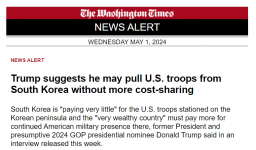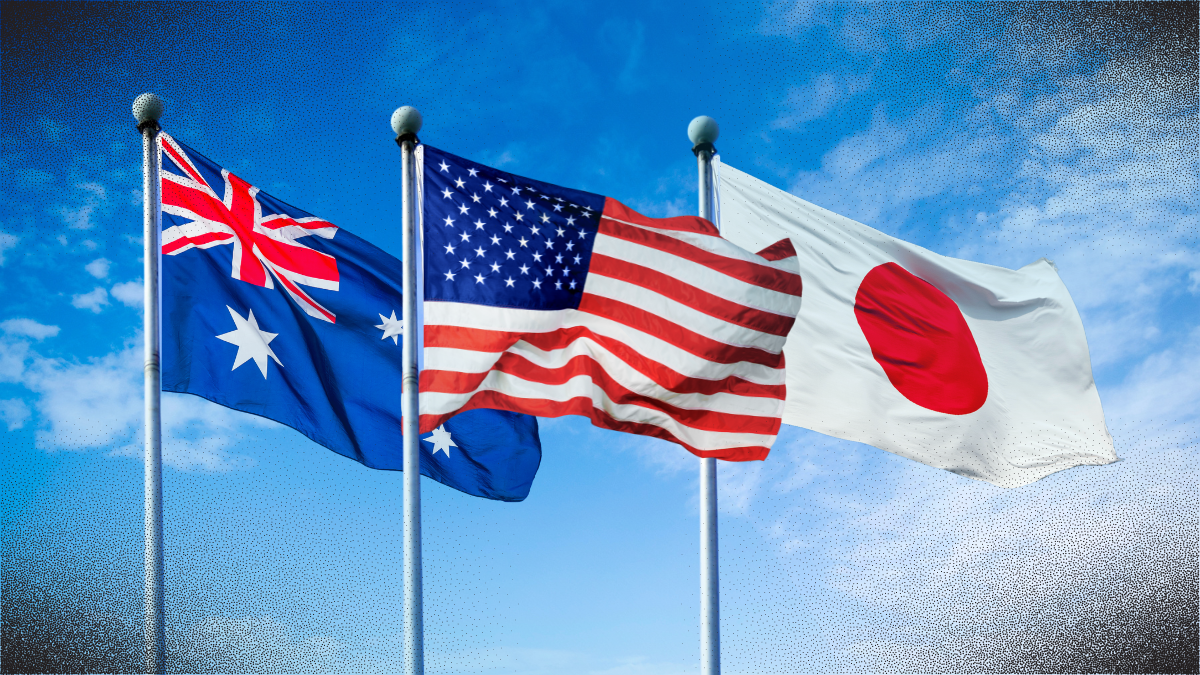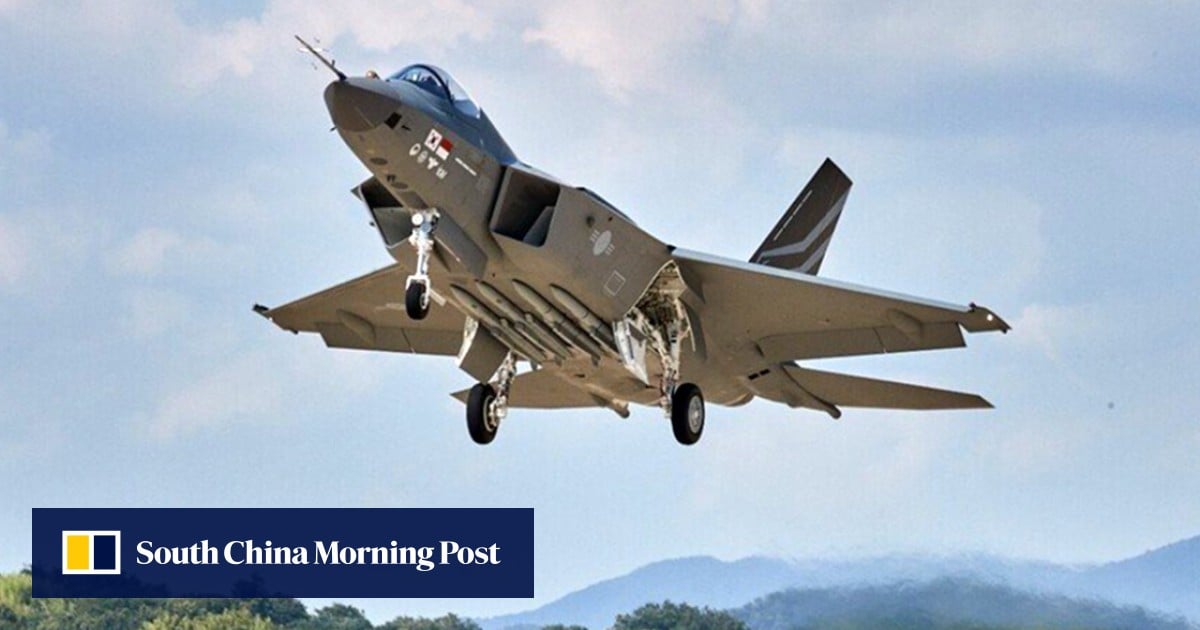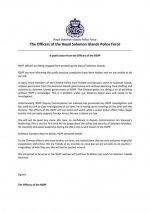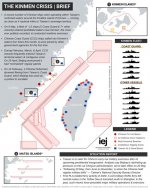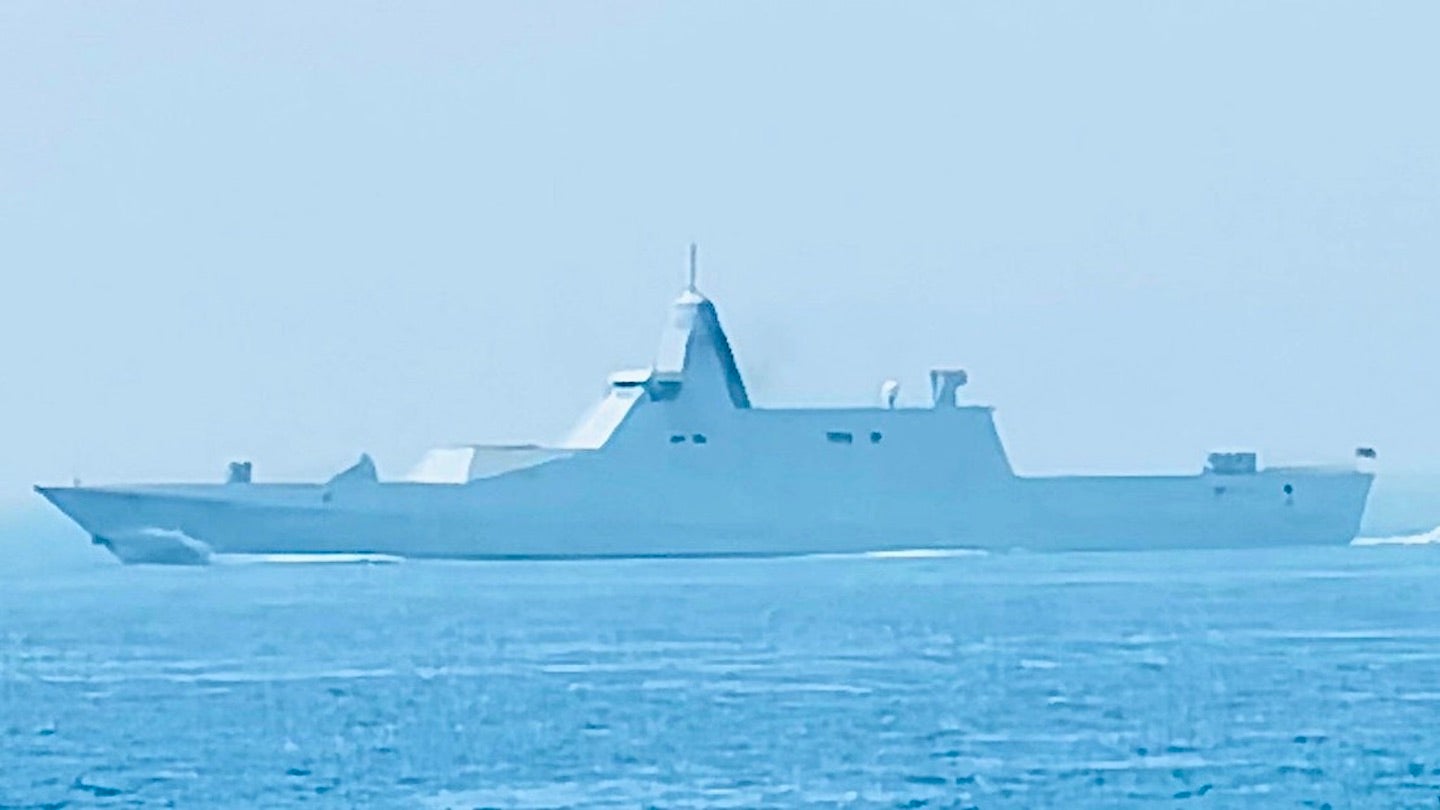Posted for fair use......
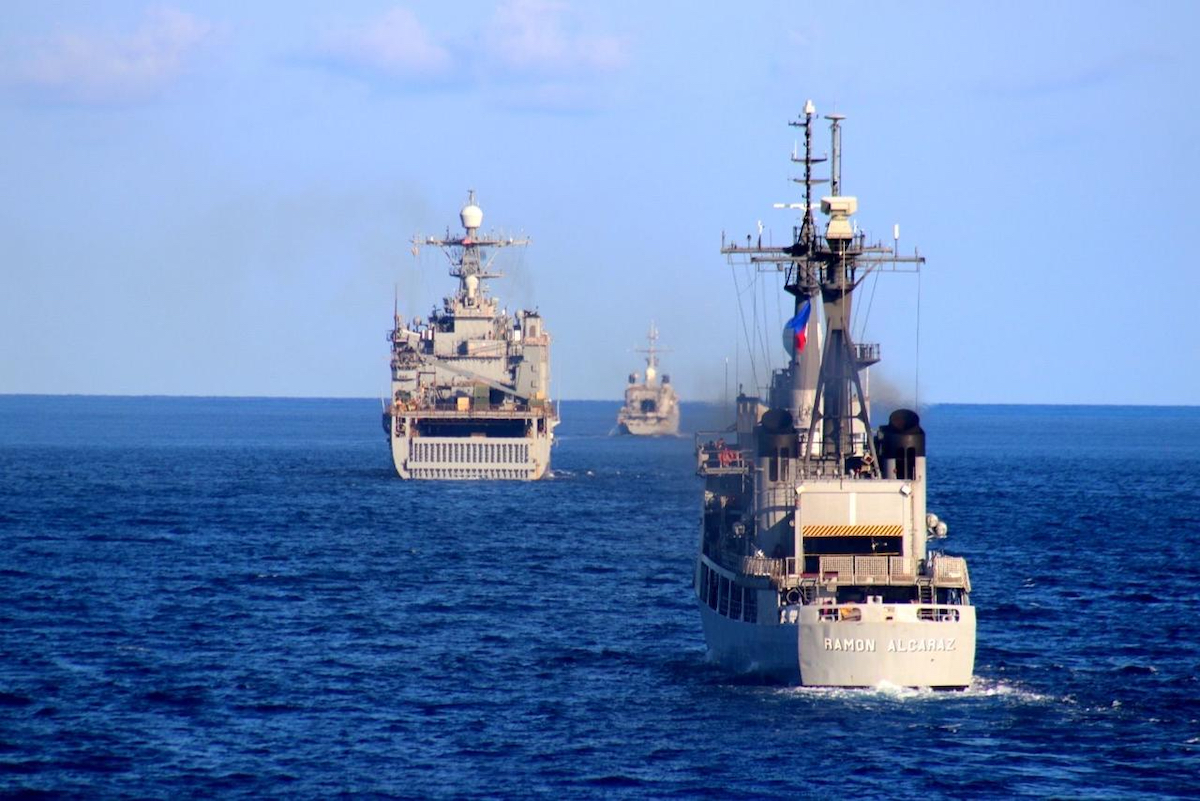
 asiatimes.com
asiatimes.com
PHILIPPINES
By RICHARD JAVAD HEYDARIAN
APRIL 29, 2024
MANILA – Enter France as the latest Western power to side with the Philippines in its bubbling dispute with China in the South China Sea.
While this year’s US-Philippine Balikatan (shoulder to shoulder) joint military exercises are notable for their sheer size with over 17,000 participating troops, state-of-the-art missile system tests and drills provocatively near Taiwan, France’s presence at the war games has been less noticed.
The French Navy’s flagship warship, Vendemiaire, sailed alongside Philippine and US counterparts – the Philippine Navy’s BRP Davao del Sur (LD-602) and BRP Ramon Alcaraz (PS-16) and the US Navy’s USS Harpers Ferry – as part of the multilateral maritime exercise (MME) under Balikatan Exercises 2024.
At the same time, France announced that it will soon kickstart high-stakes negotiations for a Visiting Forces Agreement-style deal with the Philippines to regularize and expand joint drills in the near future.
Moreover, the European power is also offering advanced weapons systems, including a potential multi-billion submarine deal, amid the Philippines’ massive military modernization program.
Although a US treaty ally, the Philippines is proactively diversifying its defense relations by cultivating ties with a wide network of partners from the Indo-Pacific to Europe to enhance its strategic autonomy and build up its laggard maritime security capabilities.
The US remains the Philippines’ leading defense partner and its only treaty ally. Earlier this month, US President Joe Biden reiterated Washington’s commitment to come to the Philippines’ rescue in the event of a conflict in the South China Sea under the terms of the 1951 Mutual Defense Treaty.
Philippine President Ferdinand Marcos Jr recently joined his Japanese counterpart Fumio Kishida for the inaugural Japan-Philippine-US (JAPHUS) trilateral summit in Washington. Both the US and Japan vowed to expand their defense aid and make new strategic investments in the Philippines at the meeting.
The Philippines is fast emerging as a critical component of America’s “integrated deterrence” strategy in Asia, hence the geographically expansive and sophisticated Balikatan joint drills in the South China Sea and around the Bashi Channel near Taiwan.
Filipino policymakers, however, are also keenly aware that the Biden administration is committed to multiple allies and partners across various theaters, from Eastern Europe to the Middle East.
The US Senate recently passed a US$95 billion emergency package with earmarks for Ukraine ($60 billion), Israel ($17 billion) and Taiwan ($8 billion). Although US military financing to the Philippines is set to more than quadruple to around $500 million, it still represents a tiny percentage of US defense aid to other security partners.
And it’s not clear when, if ever, the Philippines will also get American-made and desperately needed modern fighter jets and weapons systems, which even non-allies such as Jordan, Pakistan and Egypt have received. Given the sheer scale of the military challenge posed by China in nearby waters, the amount of US aid to the Philippines remains woefully inadequate.
Even more crucially, the two sides have also steadily recognized each others’ strategic significance. For its part, the European Union and post-Brexit Britain have stepped up their regional diplomacy through the pursuit of free trade agreements and defense cooperation with a host of Asian powers, most notably India, Japan, South Korea, Australia, Singapore and Vietnam.
Britain became the first European country to join the Japan-led Comprehensive and Progressive Agreement for Trans-Pacific Partnership free trade deal while the European Union has finalized free trade deals with multiple regional economies.
The European powers have also been active on the defense front, with all three major European powers, in addition to the Netherlands and Italy, recently conducting patrols across the Indo-Pacific.
During a 2018 trip to the region, French President Emmanuel Macron openly called for a “Paris-Delhi-Canberra axis”, which he said will “be respected by China as an equal partner”, underscoring Europe’s commitment to proactive strategic presence in the region.
France also became the first European country to appoint a special envoy in the Indo-Pacific and, along with Germany, issued its own “Indo-Pacific” strategy in the late 2010s, which served as a blueprint for the broader European Union’s foreign policy in Asia.
At times, France has pushed the China envelope with the naval frigate Vendemiaire passing through the Taiwan straits in Europe’s own version of “freedom of navigation operations.” Britain has also regularly deployed warships to the Indo-Pacific, most notably the HMS Queen Elizabeth at the height of the pandemic, for joint drills and freedom of navigation patrols.
Although the Philippines had contentious relations with Europe during the Rodrigo Duterte presidency, particularly over human rights and democracy issues, the three major European powers of Britain, France and Germany – the so-called “E3” – consistently backed Southeast Asian nations on their South China Sea disputes vis-à-vis China, often in tandem and/or in joint statements.
In the past two years, the EU and Britain have actively courted the Marcos Jr administration, which has adopted a friendlier stance toward traditional partners while standing up to China’s assertiveness in the South China Sea.
Last year, EU chief Ursula von der Leyen made a historic visit to Manila to “accelerate a new era of cooperation” in order to jointly preserve “the international rules-based order.” During her visit, she openly criticized China both for the latter’s alleged assistance to Russia in the Ukraine conflict but also, referring to the South China Sea disputes, China’s “more assertive stance in your region [Southeast Asia].”
Accordingly, she vowed to “strengthen cooperation with the Philippines on maritime security” by focusing on, inter alia, “the capacity of your National Coast Watch Center (NCWC) and your Coast Guard.”
Also last year, Britain dispatched for the first time an observer to the Balikatan exercises, underscoring the European power’s commitment to upgrading bilateral defense cooperation.
With the Philippines undergoing a once-in-a-generation military modernization program, Europe is also positioning itself as a major potential supplier of advanced weapons systems.
Most notably, France Naval Group, manufacturer of the Scorpene diesel-electric submarine, has offered to not only build submarines and a Philippine submarine force but also provide the basic infrastructure for the operation of advanced naval assets.
Other European nations such as Spain, which had a three-centuries-old colony in the Philippines, have also offered major submarine and warship packages.
In a bid to enhance their interoperability and signal a united front, France joined this month’s Balikatan exercises through trilateral naval drills with the Philippines and US, including maritime search and rescue operations, gunnery exercises and division tactics.
“They have lined up training activities. In fact, upon reaching [our] eastern coast in Palawan, they will start division tactics [training]. They will be sailing together [across] east coast then [head] up north up to Mindoro Strait [then enter] the [South China] Sea,” Philippine military spokesman Ariel Coloma told reporters in a mixture of Filipino and English.
The three navies will break out for separate exercises following their joint drills in the South China Sea, Coloma said. Crucially, the Philippines’ BRP Ramon Alcarazand the French frigateVendemiaireare set to conduct separate bilateral drills outside of the Philippine-US Balikatan exercises.
According to French Ambassador to the Philippines Marie Fontanel, the two sides have also set to begin, based on a prior agreement last December, to negotiate a Reciprocal Access Agreement (RAA), which could dramatically accelerate bilateral security cooperation.
“We will have an opportunity in May to maybe start officially the negotiations or, at least, discuss the modalities,” the French ambassador said during a news conference with French Ambassador to the Indo-Pacific Marc Abensour, who had also visited the Philippines on the sidelines of the Balikatan exercises.
Other European powers such as Britain and Germany could soon follow suit, thus potentially expanding the Philippines’ network of allies along with the US and Australia, both of which already have VFA-style deals with the Southeast Asian nation.
Follow Richard Javad Heydarian on X at @Richeydarian

France taking sides with Philippines vis-a-vis China - Asia Times
MANILA – Enter France as the latest Western power to side with the Philippines in its bubbling dispute with China in the South China Sea. While this
 asiatimes.com
asiatimes.com
PHILIPPINES
France taking sides with Philippines vis-a-vis China
France an active participant in US-Philippine Balikatan joint exercises while seeking visiting forces agreement and submarine salesBy RICHARD JAVAD HEYDARIAN
APRIL 29, 2024
MANILA – Enter France as the latest Western power to side with the Philippines in its bubbling dispute with China in the South China Sea.
While this year’s US-Philippine Balikatan (shoulder to shoulder) joint military exercises are notable for their sheer size with over 17,000 participating troops, state-of-the-art missile system tests and drills provocatively near Taiwan, France’s presence at the war games has been less noticed.
The French Navy’s flagship warship, Vendemiaire, sailed alongside Philippine and US counterparts – the Philippine Navy’s BRP Davao del Sur (LD-602) and BRP Ramon Alcaraz (PS-16) and the US Navy’s USS Harpers Ferry – as part of the multilateral maritime exercise (MME) under Balikatan Exercises 2024.
At the same time, France announced that it will soon kickstart high-stakes negotiations for a Visiting Forces Agreement-style deal with the Philippines to regularize and expand joint drills in the near future.
Moreover, the European power is also offering advanced weapons systems, including a potential multi-billion submarine deal, amid the Philippines’ massive military modernization program.
Although a US treaty ally, the Philippines is proactively diversifying its defense relations by cultivating ties with a wide network of partners from the Indo-Pacific to Europe to enhance its strategic autonomy and build up its laggard maritime security capabilities.
The US remains the Philippines’ leading defense partner and its only treaty ally. Earlier this month, US President Joe Biden reiterated Washington’s commitment to come to the Philippines’ rescue in the event of a conflict in the South China Sea under the terms of the 1951 Mutual Defense Treaty.
Philippine President Ferdinand Marcos Jr recently joined his Japanese counterpart Fumio Kishida for the inaugural Japan-Philippine-US (JAPHUS) trilateral summit in Washington. Both the US and Japan vowed to expand their defense aid and make new strategic investments in the Philippines at the meeting.
The Philippines is fast emerging as a critical component of America’s “integrated deterrence” strategy in Asia, hence the geographically expansive and sophisticated Balikatan joint drills in the South China Sea and around the Bashi Channel near Taiwan.
Filipino policymakers, however, are also keenly aware that the Biden administration is committed to multiple allies and partners across various theaters, from Eastern Europe to the Middle East.
The US Senate recently passed a US$95 billion emergency package with earmarks for Ukraine ($60 billion), Israel ($17 billion) and Taiwan ($8 billion). Although US military financing to the Philippines is set to more than quadruple to around $500 million, it still represents a tiny percentage of US defense aid to other security partners.
And it’s not clear when, if ever, the Philippines will also get American-made and desperately needed modern fighter jets and weapons systems, which even non-allies such as Jordan, Pakistan and Egypt have received. Given the sheer scale of the military challenge posed by China in nearby waters, the amount of US aid to the Philippines remains woefully inadequate.
Natural partners
Over the past decade, the Philippines and Europe have emerged as like-minded partners. As the sole liberal democracy in Southeast Asia, which has notably stood by the West amid conflicts in Ukraine and Gaza, the Philippines broadly shares Europe’s strategic outlook and value system.Even more crucially, the two sides have also steadily recognized each others’ strategic significance. For its part, the European Union and post-Brexit Britain have stepped up their regional diplomacy through the pursuit of free trade agreements and defense cooperation with a host of Asian powers, most notably India, Japan, South Korea, Australia, Singapore and Vietnam.
Britain became the first European country to join the Japan-led Comprehensive and Progressive Agreement for Trans-Pacific Partnership free trade deal while the European Union has finalized free trade deals with multiple regional economies.
The European powers have also been active on the defense front, with all three major European powers, in addition to the Netherlands and Italy, recently conducting patrols across the Indo-Pacific.
During a 2018 trip to the region, French President Emmanuel Macron openly called for a “Paris-Delhi-Canberra axis”, which he said will “be respected by China as an equal partner”, underscoring Europe’s commitment to proactive strategic presence in the region.
France also became the first European country to appoint a special envoy in the Indo-Pacific and, along with Germany, issued its own “Indo-Pacific” strategy in the late 2010s, which served as a blueprint for the broader European Union’s foreign policy in Asia.
At times, France has pushed the China envelope with the naval frigate Vendemiaire passing through the Taiwan straits in Europe’s own version of “freedom of navigation operations.” Britain has also regularly deployed warships to the Indo-Pacific, most notably the HMS Queen Elizabeth at the height of the pandemic, for joint drills and freedom of navigation patrols.
Although the Philippines had contentious relations with Europe during the Rodrigo Duterte presidency, particularly over human rights and democracy issues, the three major European powers of Britain, France and Germany – the so-called “E3” – consistently backed Southeast Asian nations on their South China Sea disputes vis-à-vis China, often in tandem and/or in joint statements.
In the past two years, the EU and Britain have actively courted the Marcos Jr administration, which has adopted a friendlier stance toward traditional partners while standing up to China’s assertiveness in the South China Sea.
Last year, EU chief Ursula von der Leyen made a historic visit to Manila to “accelerate a new era of cooperation” in order to jointly preserve “the international rules-based order.” During her visit, she openly criticized China both for the latter’s alleged assistance to Russia in the Ukraine conflict but also, referring to the South China Sea disputes, China’s “more assertive stance in your region [Southeast Asia].”
Accordingly, she vowed to “strengthen cooperation with the Philippines on maritime security” by focusing on, inter alia, “the capacity of your National Coast Watch Center (NCWC) and your Coast Guard.”
Also last year, Britain dispatched for the first time an observer to the Balikatan exercises, underscoring the European power’s commitment to upgrading bilateral defense cooperation.
With the Philippines undergoing a once-in-a-generation military modernization program, Europe is also positioning itself as a major potential supplier of advanced weapons systems.
Most notably, France Naval Group, manufacturer of the Scorpene diesel-electric submarine, has offered to not only build submarines and a Philippine submarine force but also provide the basic infrastructure for the operation of advanced naval assets.
Other European nations such as Spain, which had a three-centuries-old colony in the Philippines, have also offered major submarine and warship packages.
In a bid to enhance their interoperability and signal a united front, France joined this month’s Balikatan exercises through trilateral naval drills with the Philippines and US, including maritime search and rescue operations, gunnery exercises and division tactics.
“They have lined up training activities. In fact, upon reaching [our] eastern coast in Palawan, they will start division tactics [training]. They will be sailing together [across] east coast then [head] up north up to Mindoro Strait [then enter] the [South China] Sea,” Philippine military spokesman Ariel Coloma told reporters in a mixture of Filipino and English.
The three navies will break out for separate exercises following their joint drills in the South China Sea, Coloma said. Crucially, the Philippines’ BRP Ramon Alcarazand the French frigateVendemiaireare set to conduct separate bilateral drills outside of the Philippine-US Balikatan exercises.
According to French Ambassador to the Philippines Marie Fontanel, the two sides have also set to begin, based on a prior agreement last December, to negotiate a Reciprocal Access Agreement (RAA), which could dramatically accelerate bilateral security cooperation.
“We will have an opportunity in May to maybe start officially the negotiations or, at least, discuss the modalities,” the French ambassador said during a news conference with French Ambassador to the Indo-Pacific Marc Abensour, who had also visited the Philippines on the sidelines of the Balikatan exercises.
Other European powers such as Britain and Germany could soon follow suit, thus potentially expanding the Philippines’ network of allies along with the US and Australia, both of which already have VFA-style deals with the Southeast Asian nation.
Follow Richard Javad Heydarian on X at @Richeydarian


